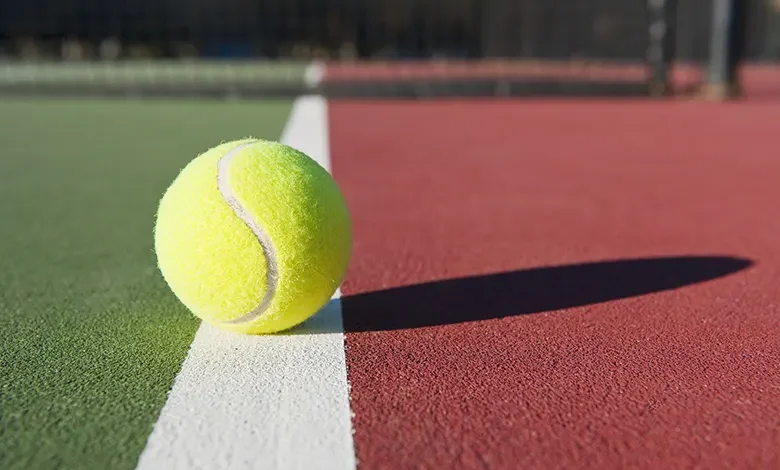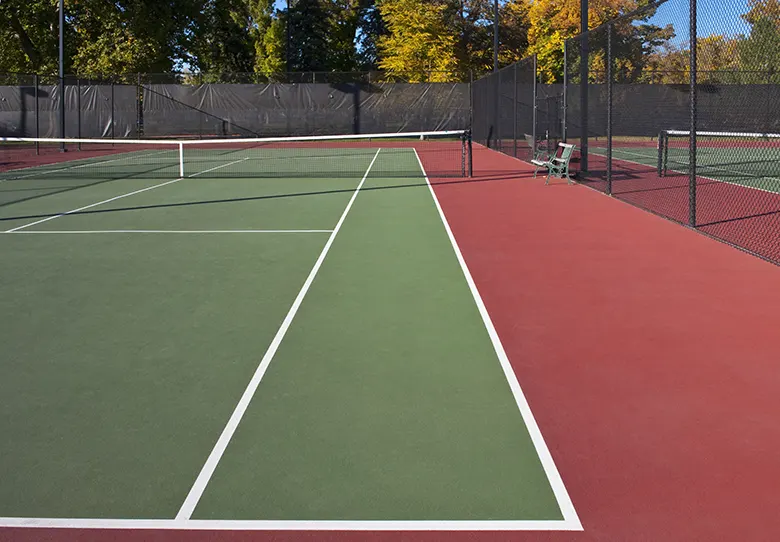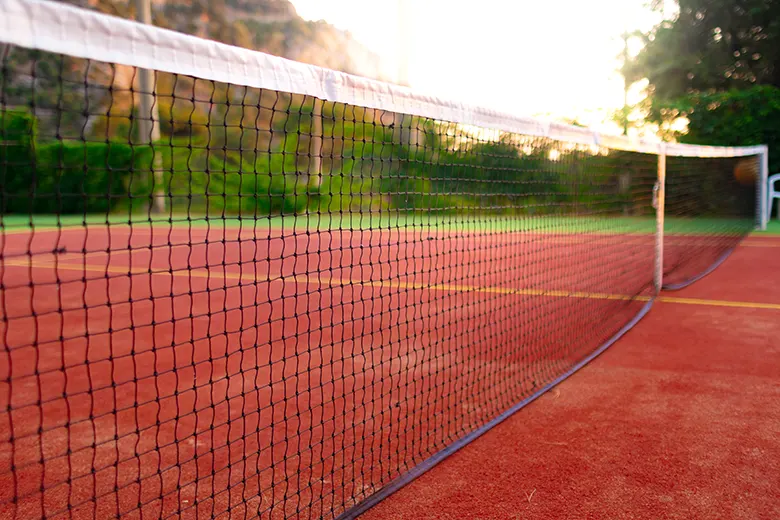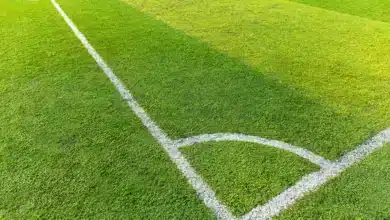
Introduction to Tennis Court Dimensions
Table of Contents
Tennis court dimensions is fundamental for anyone involved in the sport, including players, coaches, and enthusiastic fans. Tennis courts are designed with specific measurements that dictate how the game is played, influencing factors such as player movement, shot selection, and overall strategy. The dimensions of a tennis court are not arbitrary; they have been standardized by the International Tennis Federation (ITF) to ensure fairness and playability at all levels of competition.
The standard tennis court measures 78 feet in length and 36 feet in width for doubles matches, while the singles court narrows to 27 feet across. These dimensions are significant as they determine the layout of both the playing area and surrounding zones, which can affect the dynamics of each match. Additionally, the net height is also regulated, standing at 3 feet in the center and 3 feet 6 inches at the posts. This height is crucial, as it challenges players in terms of technique and strategy when executing various shots.
For coaches, understanding these measurements enables the development of training regimens that are tailored to the court dimensions, helping players enhance their skills in line with the actual constraints they will face during competitive play. Fans, on the other hand, benefit from knowing the court’s layout, as it adds depth to their appreciation of the strategies employed by players during matches. Analyzing how surface variations, such as clay, grass, or hard courts, can alter the impact of these dimensions further enriches the viewing experience.
Therefore, an in-depth comprehension of tennis court dimensions is vital, as it underpins the sport’s structural integrity and competitive framework, shaping players’ performances and strategies during play. Understanding these aspects enhances not only participation but also the enjoyment of the game.

Standard Dimensions of a Tennis Court
A regulation tennis court is a rectangular playing area that serves both singles and doubles matches with specific dimensions. Instituted by the International Tennis Federation (ITF), the official court measurements provide uniformity essential for the sport’s integrity. The overall length of a standard tennis court is 78 feet (23.77 meters) while the width varies between singles and doubles play. For singles matches, the court’s width is set at 27 feet (8.23 meters), whereas in doubles, it extends to 36 feet (10.97 meters).
The area of the court can be calculated by multiplying the length by the width. For singles matches, this results in a total area of 2,106 square feet (195.5 square meters), while doubles matches increase this figure to 2,808 square feet (260.1 square meters). These dimensions allow players to effectively utilize the space, creating a dynamic gameplay scenario that requires strategic movement and precision.
The court is divided by a net that stands 3 feet (0.914 meters) high at its center and 3.5 feet (1.07 meters) at the posts. This elevation is crucial as it influences the trajectory of the ball, making the challenge of hitting accurate shots even more demanding. Additionally, the service boxes, located at each end of the court and measuring 21 feet (6.4 meters) wide and 13.5 feet (4.1 meters) deep, further delineate the playing area for serving and receiving.
Moreover, the lines marking the court are crucial as they define the limits and areas for play. These include the baseline, sidelines, service lines, and center service line, all essential in regulating play. Understanding these key dimensions is paramount for players of all levels, as they practice and compete within defined boundaries that promote fair competition.
Tennis Court Markings and Their Significance
Understanding the markings on a tennis court is essential for both players and spectators, as these lines are fundamental to the game’s play and rules. The most prominent markings are the baselines, which run parallel to the net at each end of the court. These lines denote the boundary for the service area and play. Players must serve behind the baseline and return the ball before it crosses this line during rallies. Hence, the baselines serve a crucial role in defining the space within which players must operate.
Another significant element is the service boxes, located at both ends of the court, adjacent to the net and divided by the center service line. These boxes are where players must direct their serves, ensuring that the ball lands within the correct confines. Each service box is further divided into right and left halves, catering to the deuce and ad side serves respectively. Mastery of serving within these boxes is vital for a successful match, as serving errors can result in loss of points.
The center service line, which runs vertically from the net to the baseline, works in conjunction with the service boxes to define the target area for serves. While the center court is the area around the net, understanding the importance of its markings promotes strategic positioning during gameplay. Additionally, the doubles sidelines are present to distinguish between singles and doubles play; these lines expand the court’s width for doubles matches. Each marking inscribed on a tennis court plays an instrumental role in maintaining the integrity of the game and facilitating fair play.
Differences Between Indoor and Outdoor Court Dimensions
Tennis courts can be classified into two primary categories based on their playing environment: indoor and outdoor courts. While both types adhere to specific regulations established by the International Tennis Federation (ITF), there are distinct differences that impact the dimensions and characteristics of each. Understanding these differences is crucial for players, coaches, and facility operators.
In general, both indoor and outdoor tennis courts share the same fundamental dimensions which are 78 feet in length and 36 feet in width for doubles play. However, the environment in which a court is situated can influence various attributes, including surface type, height of surrounding walls, and overall playing conditions. For instance, outdoor courts are often exposed to elements such as wind, sunlight, and varying temperatures, which can indirectly affect players’ performance as well as court conditions.
One of the most significant factors distinguishing indoor from outdoor courts is the surface type. Outdoor courts may be constructed using materials such as clay, grass, or hardcourt surfaces made of asphalt or concrete. In comparison, indoor courts are predominantly made of synthetic materials or cushioned hard surfaces, offering a consistent level of play year-round, regardless of weather conditions. Additionally, the lack of natural elements in indoor courts allows for more controlled environmental factors, which can lead to faster surface conditions.
Furthermore, the height of indoor courts typically features a minimum ceiling height of 23 feet 9 inches (7.24 meters), which is necessary to account for high shots and serves. This is not a concern with outdoor courts, where the sky serves as the upper boundary. The variations in height and surface can lead to different playing styles and strategies being employed, reflecting the nuanced relationship between court dimensions and player performance.
Regulatory Standards Set by Tennis Organizations
The construction and maintenance of tennis courts are governed by specific standards established by prominent tennis organizations, primarily the International Tennis Federation (ITF) and the United States Tennis Association (USTA). These regulations ensure that the dimensions and characteristics of tennis courts create a uniform playing environment for players worldwide. The adherence to these standards is crucial for maintaining the integrity of the game and ensuring fair play.
According to the ITF, a standard tennis court for singles play measures 23.77 meters long and 8.23 meters wide, while for doubles play, the court width extends to 10.97 meters. Additionally, the total length of the court, which includes room for the service boxes and the net, remains consistent across all dimensions. The net itself is positioned at the center of the court and is 0.914 meters high at the center, creating a uniform challenge for players during matches.
Similarly, the USTA adheres to these same dimensions as established by the ITF. They also emphasize the importance of the surrounding area, recommending a minimum space of three to five meters beyond the outer lines of the court. This area ensures player safety and optimal conditions for spectators. The surface of tennis courts—whether clay, grass, or hard court—is also subject to these regulations, which stipulate that the surface must provide sufficient traction and bounce for the game.
The impact of these regulations extends beyond mere construction; they also inform maintenance practices. Courts must be regularly inspected and repaired to meet organizational standards, ensuring that they remain safe and usable throughout their lifespan. In essence, understanding the regulatory standards set forth by the ITF and USTA is essential for anyone involved in the construction, maintenance, or use of tennis courts.
Impact of Court Dimensions on Game Play
The dimensions of a tennis court significantly influence both the style of play and the strategies employed by athletes during a match. A standard tennis court measures 78 feet in length and 27 feet in width for singles matches, while the width increases to 36 feet for doubles. These dimensions create distinct playing environments, where the choice of court surface further adds to the complexity of gameplay.
Court dimensions can affect how players approach the game. For instance, on a standard hard court, the larger playing area allows for the execution of a wider variety of shots, accommodating aggressive baseline play and strategic net approaches. Players may adopt different strategies such as serving and volleying or choosing to engage in prolonged rallies, based on the court’s dimensions. Conversely, smaller courts or those with different surface characteristics, like clay or grass, can limit players’ options, forcing them to adjust their play styles. For example, clay courts, with their slower surface, often lead to longer rallies and a more conservative approach, while grass courts promote faster gameplay with quick points due to lower bounce.
The impact of court dimensions is also evident in professional tournaments, where players must adapt their strategies to suit specific conditions. For instance, matches at Grand Slam events, which are played on various surfaces, showcase how athletes modify their gameplay to exploit the unique dimensions of each court. Players renowned for their powerful serves may thrive on faster surfaces, whereas those skilled in constructing points can excel on slower courts.
Ultimately, understanding the relationship between court dimensions and gameplay is crucial for players at all levels. This comprehension aids in developing game strategies tailored to specific conditions, ensuring optimal performance regardless of the court type. Each unique feature, from dimensions to surfaces, significantly shapes the dynamics of a match, emphasizing the need for adaptability and strategic foresight in competitive tennis.

Common Variations in Tennis Court Dimensions
Tennis courts, while often standardized in professional settings, can exhibit significant variations in dimensions, particularly in recreational environments. These non-standard configurations are designed to accommodate different skill levels, age groups, and training purposes. Understanding these variations is crucial for players, coaches, and facility managers alike, as they can impact gameplay and skill development.
One common variation is the children’s tennis court, which is typically smaller than the standard dimensions. These courts may measure 18 meters long and 6.4 meters wide, making them more accessible to younger players who may struggle with the full-size court. The reduced dimensions not only make the game more enjoyable for children but also enhance their ability to learn essential skills and techniques in a less daunting environment.
Another variation is the short court, a training tool used to help players improve specific aspects of their game. This court typically measures around 11 meters in length and allows players to focus on their footwork, shot precision, and strategy without the need to cover the entire length of a regulation court. Short courts can be particularly beneficial for beginners or players looking to refine their skills in a controlled setting.
Additionally, amateur facilities may adopt unique variations to better suit local needs. These courts may feature modified dimensions to accommodate community requirements or space constraints. Such flexibility in court design is vital in promoting the sport, allowing more individuals to engage in tennis while fostering a supportive environment for skill development.
Ultimately, while standard tennis court dimensions are essential for formal competitions, understanding these common variations contributes to the inclusiveness and growth of the sport at all levels. By accommodating different player needs and preferences, these non-standard courts encourage broader participation in tennis.

Considerations for Building a Tennis Court
When planning to construct a tennis court, several essential factors must be meticulously considered to ensure both functionality and compliance with standard dimensions. The first step in the process is site selection. It is imperative to choose a location that is not only conveniently accessible but also appropriate in terms of landscape and soil stability. Ideally, the chosen site should have sufficient space to accommodate the court’s dimensions, which measure 78 feet in length and 27 feet in width for singles play, and 36 feet in width for doubles. Additionally, space for surrounding safety zones is crucial to facilitate play without hindrance.
Material choice represents another critical consideration when building a tennis court. The surface type can significantly affect player performance, safety, and maintenance. Options range from hard courts, which offer durability and consistent bounce, to clay courts that provide slower play and allow for sliding. There are also grass courts, known for their fast-paced game but requiring more upkeep. Each material comes with its unique benefits and drawbacks; therefore, understanding the local climate and intended usage will assist in making the right selection.
Moreover, adherence to standard dimensions and regulations laid out by governing bodies, such as the International Tennis Federation (ITF), is vital. Ensuring that the court meets these specifications not only promotes fair play but also enhances the overall experience for players. This includes considering factors such as net height, court markings, and lighting, particularly for outdoor courts, where visibility can vary by time of day and weather conditions. Each of these elements should be meticulously integrated into the design process, guaranteeing that players enjoy a quality game while adhering to professional standards.
Conclusion and Final Thoughts on Tennis Court Dimensions
Throughout this guide, we have explored the various dimensions of tennis courts and their significance in both recreational and professional play. Understanding these measurements is crucial for players, coaches, and facility managers alike, as they directly influence gameplay, strategy, and overall enjoyment of the sport. The standard dimensions for singles and doubles matches differ, with singles courts measuring 78 feet long and 27 feet wide, while doubles courts extend to 36 feet in width. This distinction is vital for players to grasp, as it affects positioning, shot selection, and court coverage during competitive play.
Moreover, the surface type, whether it be clay, grass, or hard court, also has an immense impact on the game’s dynamics. Each surface affects ball speed, spin, and players’ movement, necessitating an understanding of how court dimensions interact with surface characteristics. The placement of nets, service boxes, and other elements further indicates the precision required when measuring, maintaining, and playing on these courts.
For recreational players, familiarizing themselves with tennis court dimensions can enhance both skills and enjoyment, allowing for effective practice sessions and well-structured matches. On the professional level, adherence to standardized dimensions is essential for fair play and competitive integrity across tournaments worldwide. Ensuring that courts meet these specifications guarantees that all players have an equal opportunity to perform at their best.
In conclusion, the dimensions of a tennis court play a critical role in shaping the game, impacting everything from strategies to player capabilities. By acknowledging the importance of these measurements, all involved in the sport can enhance their understanding and appreciation of tennis, ultimately leading to a higher level of engagement and performance.




First Comment! 🙂
Looking for new contents!